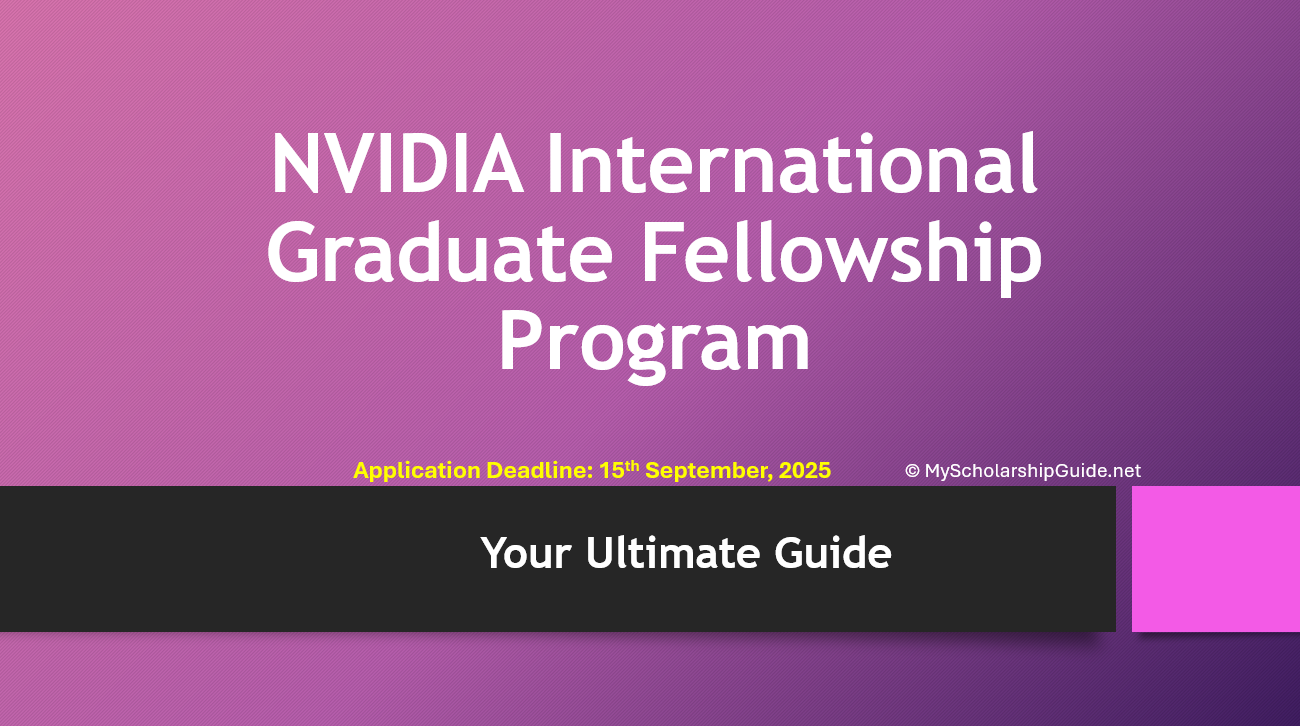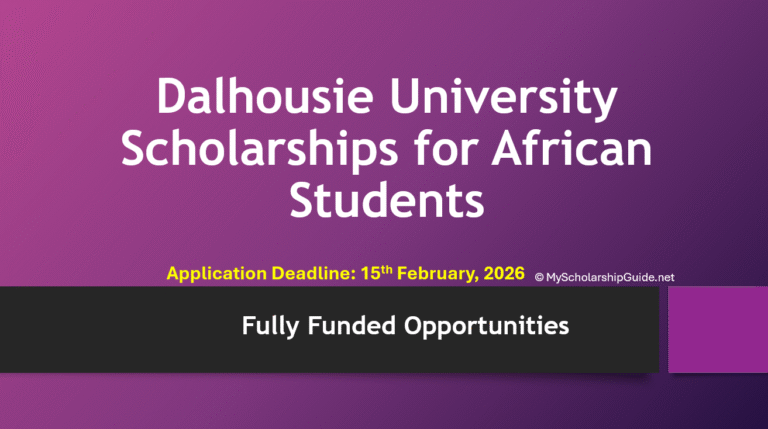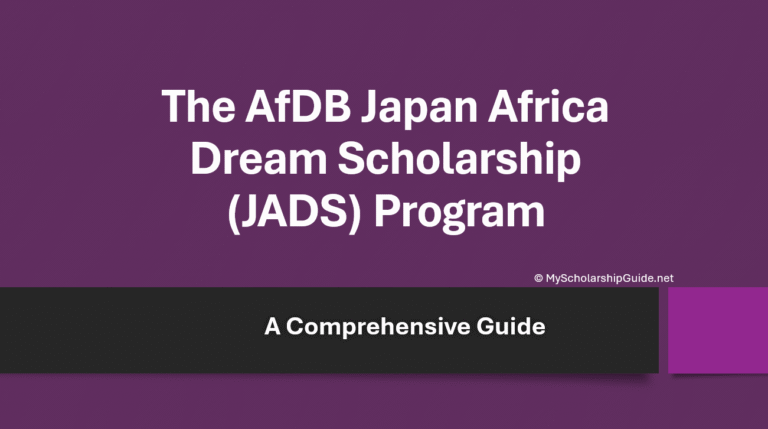How to Win the 2026 NVIDIA International Graduate Fellowship Program: The Ultimate Guide
How to Win the 2026 NVIDIA International Graduate Fellowship Program: The Ultimate Guide
Welcome to your definitive guide, future tech innovator! If you’re a PhD student working at the bleeding edge of computing, you already know the 2026 NVIDIA International Graduate Fellowship Program is more than just funding—it’s a launchpad. It’s a mark of distinction that signals you are among the world’s most promising young researchers in areas that are defining the future of technology.
Winning this fellowship places you in an elite cohort, gives you unparalleled access to NVIDIA’s resources and minds, and provides the financial freedom to pursue your ambitious research without constraint. But competition is fierce. The applicants are brilliant, and the standards are incredibly high.
So, how do you stand out?
You’ve come to the right place. Here at My Scholarship Guide, we specialize in demystifying these life-changing opportunities. In this comprehensive guide, we will walk you through every single step of the application process for the 2026 NVIDIA International Graduate Fellowship Program. From understanding the core values that drive the selection committee to mastering your research proposal and securing stellar recommendations, this guide is your strategic roadmap to success. Let’s build your winning application together.
Section 1: The Foundation — Understanding the 2026 NVIDIA International Graduate Fellowship Program
Before you write a single word, you must understand the “why” behind this award. The 2026 NVIDIA International Graduate Fellowship Program isn’t just looking for high GPAs; it’s looking for future collaborators and leaders. This is an investment in the intellectual pipeline that fuels NVIDIA’s own innovation engine. To succeed, you must demonstrate that you are a perfect fit for that investment.
A Deep Dive into NVIDIA’s Core Values
Your entire application must be a testament to the values NVIDIA holds dear. Let’s break them down:
- Cutting-Edge Innovation: This is non-negotiable. NVIDIA is a world leader because it consistently pushes the boundaries of what’s possible in graphics, AI, high-performance computing (HPC), and system architecture. They are looking for researchers who share this DNA. Your work can’t be incremental; it must be transformative. It should address a significant challenge with a novel, creative, and technically sound approach. The committee wants to see that “wow” factor—a spark of genius that promises a leap forward in your field.
- Academic Excellence and Research Potential: Strong grades and a solid academic history are the baseline. What truly matters is your potential as a researcher. This is demonstrated through your publications, conference presentations, and the sheer ambition of your thesis topic. They are looking for evidence that you have the rigor, discipline, and intellectual horsepower to not only complete your proposed research but to become a leading voice in your domain for years to come.
- Industry Collaboration Readiness: This fellowship is a two-way street. NVIDIA funds you and, in return, gains a connection to your brilliant mind and groundbreaking work. The required summer internship is a testament to this. You must show that you can thrive in a fast-paced, industry-driven R&D environment. This means being a clear communicator, a collaborative team player, and someone who can connect theoretical research to real-world applications and products. Highlighting any past industry internships or collaborative projects is a massive advantage.
- Leadership in the Technology Research Community: Are you just a student in a lab, or are you an emerging leader? Leadership can be demonstrated in many ways: mentoring junior students, organizing a seminar series, taking an active role in a professional society (like ACM or IEEE), or being the lead author on a key paper. NVIDIA wants to fund individuals who will not only advance their own work but also elevate the entire research community.
The Ideal Applicant Profile for the NVIDIA Fellowship
Based on these values, the ideal candidate for the 2026 NVIDIA International Graduate Fellowship Program is not just a student; they are a visionary researcher.
This person is:
- Technically brilliant, working on a problem directly relevant to NVIDIA’s core interests (think accelerated computing, deep learning, computer graphics, autonomous vehicles, robotics, etc.).
- An innovator, proposing a solution or approach that is genuinely new and exciting.
- A clear communicator, able to articulate the importance and methodology of their complex research to a highly technical but broad audience.
- A proactive collaborator, who sees the value in bridging the gap between academia and industry.
- An emerging leader, showing initiative and a commitment to their field that goes beyond their own thesis.
Building Your Strategic Narrative
Your application is not a collection of separate documents; it is a single, cohesive story. Your CV, your research proposal, and your letters of recommendation must all echo the same central theme: “I am the visionary researcher and future leader you are looking for.”
Before you apply, take a moment to define your narrative. Complete this sentence: “I am the ideal candidate for the 2026 NVIDIA International Graduate Fellowship Program because my research in [Your Specific Field] will revolutionize [A Specific Area] by using [Your Novel Method], which aligns directly with NVIDIA’s mission to [Connect to an NVIDIA Goal].”
Every piece of your application should support this statement. Your CV highlights the experiences that prove it. Your research proposal details the “what” and “how.” Your recommendation letters provide the third-party validation.
Section 2: Proposal Mastery — A Deep Dive into the NVIDIA Research Proposal
The heart of your application for the 2026 NVIDIA International Graduate Fellowship Program is the two-page Research Summary/Thesis Proposal. This is not a traditional personal essay; it’s a technical document designed to convince some of the world’s top engineers and researchers that your work is worth their investment. Think of it as a funding pitch to your dream R&D department.
Prompt Breakdown: Deconstructing the “Research Summary/Thesis Proposal”
The request for a “research summary/thesis proposal” is deceptively simple. The committee isn’t just asking what you’re doing. They are implicitly asking a series of much deeper questions:
- What is the critical problem you are solving? You must frame your work around a significant, unsolved challenge in your field.
- Why is this problem important right now? Create a sense of urgency. Why does this need to be solved in the coming years?
- What is your novel insight or approach? This is the core of your innovation. What makes your method different from and better than everything that has come before?
- How does your research connect to NVIDIA’s interests? You must draw a clear, explicit line between your work and NVIDIA’s technology, platforms (like CUDA, TensorRT, Omniverse), or strategic focus areas. Do you use their hardware? Does your work improve algorithms that run on GPUs? Will your findings enable new applications for their products?
- What are your expected outcomes and their potential impact? Be bold. If your research is successful, what will be the tangible result? Will it be a new algorithm, a new architecture, a new open-source tool? How will it advance the state-of-the-art?
Brainstorming Strategies for a High-Impact Proposal
Don’t just write a dry summary of your existing work. Frame it strategically to capture the committee’s attention. Here are three powerful angles:
- The “Direct Alignment” Angle: This is the most straightforward approach. Your research directly uses, critiques, or improves upon NVIDIA’s technology stack. For example, you might be developing a novel algorithm that achieves unprecedented performance on NVIDIA GPUs, or perhaps you’re creating a new deep learning architecture that solves a problem NVIDIA is actively working on. This angle clearly and immediately demonstrates your relevance.
- The “Future Application” Angle: Your work might not use NVIDIA hardware today, but it will create a massive new market or application for it tomorrow. For example, your fundamental research in computational biology might enable a new class of drug discovery simulations that would require massive GPU clusters. Frame your proposal around this future vision, showing how your work paves the way for new frontiers where NVIDIA technology will be essential.
- The “Fundamental Breakthrough” Angle: Your research may be more theoretical, perhaps in areas like new computer architectures, novel materials for semiconductors, or foundational AI theory. Here, your task is to explain how this fundamental breakthrough will underpin the next generation of hardware and software. Show the committee that you are thinking 10-20 years ahead and that your work will inform the very design of the systems NVIDIA will be building in the future.
Common Mistakes to Avoid
- Being Too Generic: Do not submit a proposal you wrote for a different grant or fellowship without tailoring it. It must scream “NVIDIA.”
- Failing to Connect the Dots: Explicitly state how your work relates to NVIDIA. Don’t make the reviewers guess.
- Being Overly Theoretical: Even for theoretical work, you must ground it in its potential long-term impact. Show a path from theory to practice.
- Ignoring Formatting and Page Limits: Adhere strictly to the two-page limit (plus bibliography). Use clear headings, legible fonts, and well-designed figures or diagrams to make your proposal easy to read and digest. A poorly formatted document signals a lack of professionalism.
- A Weak Introduction: Your first paragraph must grab the reader. Clearly state the problem, your proposed solution, and the potential impact right away.
Detailed Sample Proposal Outline
Structure your two pages for maximum impact.
- Part 1: The Vision (Approx. 1/2 page)
- Compelling Title: Make it descriptive and exciting (e.g., “Accelerating Graph Neural Networks for Real-Time Physics Simulation on the NVIDIA Omniverse Platform”).
- Abstract/Executive Summary (3-5 sentences): This is your elevator pitch. Concisely state the problem, your unique solution, and the expected breakthrough. This might be the only part some reviewers read initially, so make it count.
- Introduction & Problem Statement: Go into detail on the challenge. Use data to quantify the problem if possible. Establish why current solutions are inadequate and why a new approach is urgently needed.
- Part 2: The “How” (Approx. 1 page)
- Background & Related Work: Briefly demonstrate your mastery of the field. Show what others have done and clearly articulate the gap your research will fill.
- Proposed Research & Methodology: This is the technical heart of your proposal. Be specific. Detail the algorithms, architectures, experiments, and datasets you will use. Crucially, mention how NVIDIA’s hardware (e.g., A100/H100 GPUs) or software (e.g., CUDA, cuDNN, TensorRT) is integral to your methodology. This section proves you have a concrete plan.
- Preliminary Results (if any): If you have early data or a proof-of-concept, include it here. A compelling graph or figure can be worth a thousand words.
- Part 3: The Impact (Approx. 1/2 page)
- Expected Outcomes & Deliverables: What will be the tangible products of your research? A new open-source library? A series of top-tier publications? A patentable technique?
- Broader Impact & NVIDIA Relevance: Reiterate the importance of your work. How will it advance science and technology? Circle back and explicitly state how it benefits NVIDIA’s ecosystem and long-term vision.
- Brief Research Timeline: A simple chart or bulleted list showing your key milestones for the fellowship year demonstrates that you have thought through the practicalities of your project.
- Part 4: Bibliography (Separate Page)
- List all cited works in a standard academic format. This does not count towards your two-page limit.
Section 3: Beyond the Proposal — A Guide to Other Application Components
A brilliant research proposal can be sunk by weak supporting documents. Every component of your application for the 2026 NVIDIA International Graduate Fellowship Program must reinforce your strategic narrative.
Securing Powerful Letters of Recommendation
Your letters of recommendation are your third-party validation. They provide objective proof of the claims you make in the rest of your application.
- Who to Ask: You need 2-3 letters, with one required from your primary thesis advisor.
- Thesis Advisor: This is the most important letter. They can speak authoritatively about your research skills, innovation, and potential.
- Other Recommenders: Choose professors who know you well from advanced coursework or other research projects. An industry professional (e.g., from a past internship) who can speak to your collaboration and real-world problem-solving skills can be an incredibly powerful second or third recommender. Choose people who can speak directly to the NVIDIA values.
- How to Ask: Ask at least 4-6 weeks in advance. Never assume a “yes.” Ask politely, “Do you feel you know me and my research well enough to write a strong letter of recommendation for the NVIDIA Graduate Fellowship?”
- ⭐ Hot Tip: The Recommender’s Packet: Make their job easy. Provide them with a single, well-organized PDF containing:
- A link to the 2026 NVIDIA International Graduate Fellowship Program website.
- The exact deadline and submission instructions.
- Your final CV.
- Your final research proposal.
- A “brag sheet” with bullet points reminding them of your key achievements, projects you worked on with them, and specific skills you want them to highlight that align with NVIDIA’s values (e.g., “Please consider mentioning my leadership role in the
Xproject or my novel use of CUDA in your advanced GPU programming course.”).
The Interview: Preparing for the Final Stage
While not explicitly listed as a guaranteed step for all applicants, you should always be prepared for an interview. If you are shortlisted, this is your chance to bring your application to life.
- Likely Questions: Be ready to discuss your work and your future.
- “Walk us through your research proposal in 5 minutes.” (Practice this!)
- “What is the most innovative aspect of your work?”
- “Where do you see the biggest challenges in your proposed research?”
- “How do you see your work fitting into NVIDIA’s product roadmap or research areas?”
- “Tell us about a time you overcame a significant technical challenge.”
- “Why are you interested in interning at NVIDIA specifically?”
- “What are your long-term career goals after your PhD?”
- Preparation Strategy:
- Know Your Proposal Inside and Out. Be ready to defend it and elaborate on any part of it.
- Research NVIDIA. Go beyond the homepage. Read their latest blog posts, watch their GTC keynotes, and look up the researchers who work in your area. Mentioning a specific NVIDIA project or paper shows genuine interest.
- Prepare Your Own Questions. Ask thoughtful questions about the research culture, the internship experience, and future research directions at NVIDIA.
Crafting Your Resume/Curriculum Vitae (CV)
Your CV provides the factual backbone for your narrative. Tailor it for the 2026 NVIDIA International Graduate Fellowship Program.
- Highlight What Matters: Put the most relevant sections first. Education, Research Experience, Publications, and Conference Presentations should be near the top.
- Quantify Achievements: Instead of “Worked on a deep learning project,” write “Developed a novel CNN architecture that improved image classification accuracy by 15% on the ImageNet dataset, implemented using PyTorch and NVIDIA V100 GPUs.”
- Skills Section: Explicitly list technical skills relevant to NVIDIA: Programming Languages (C++, Python), Frameworks (PyTorch, TensorFlow), and especially NVIDIA-specific technologies (CUDA, TensorRT, cuDNN, Omniverse, etc.).
Section 4: Final Steps — Your Application Submission Checklist
You’ve done the hard work. Don’t let a simple mistake at the finish line derail your chances.
The Power of Meticulous Proofreading
An application for a prestigious fellowship from a world-leading tech company must be flawless. Typos, grammatical errors, or formatting issues signal carelessness.
- Read every document aloud to catch awkward phrasing.
- Use a grammar checker like Grammarly, but do not rely on it exclusively.
- Ask a trusted colleague, a friend in a technical field, or your university’s writing center to review everything for clarity and correctness. A fresh pair of eyes is invaluable.
The Final Cohesion Check
Before you click “submit,” perform one last review of all your documents together. Ask yourself:
- Does my research proposal tell the same story as my CV?
- Do the skills I claim to have on my CV appear in the methodology of my proposal?
- Have I provided my recommenders with enough information to write letters that support my central narrative?
- Is my passion for my field and my alignment with NVIDIA’s mission evident throughout?
Deadline Management and Submission
The application portal has many components. Do not wait until the last day.
- Start Early: Create your profile on the submission portal weeks in advance.
- Monitor Your Recommenders: The system will likely require recommenders to upload their letters directly. Politely send them a reminder one week before the deadline. You are responsible for ensuring their letters are submitted on time.
- Submit Early: Aim to submit your entire application at least 2-3 days before the final deadline to avoid last-minute technical glitches or stress.
Section 5: Resources & Conclusion
Your journey to becoming an NVIDIA Fellow is a marathon, not a sprint. Use every available resource to your advantage.
Official Links and Resources
- https://research.nvidia.com/graduate-fellowships – This is your primary source of truth. Check it often for updates.
- NVIDIA Research Website: Explore the current research projects and publications to better align your proposal.
- NVIDIA Careers & Internship Pages: Get a feel for the company culture and the types of roles available.
- Your University’s Graduate Funding Office: They often have resources, workshops, and even examples of successful fellowship applications.
Your Moment Is Now
Applying for the 2026 NVIDIA International Graduate Fellowship Program is a significant undertaking, but the potential reward is immense. You are pursuing research that has the power to change the world. You are exactly the kind of person NVIDIA is looking to empower.
Believe in your work. Craft your narrative with care and conviction. Pay attention to every detail. By following this guide, you have given yourself a powerful strategic advantage. Now, take a deep breath, channel that innovative spirit, and build the application that will launch the next phase of your career.
Good luck! We are rooting for you.
Disclaimer
Unless otherwise stated, www.myscholarshipguide.com is not affiliated with any of the scholarship providers listed on our website, nor do we process applications on behalf of any organization. The content provided is for informational purposes only, and visitors are encouraged to use this information at their own discretion.







